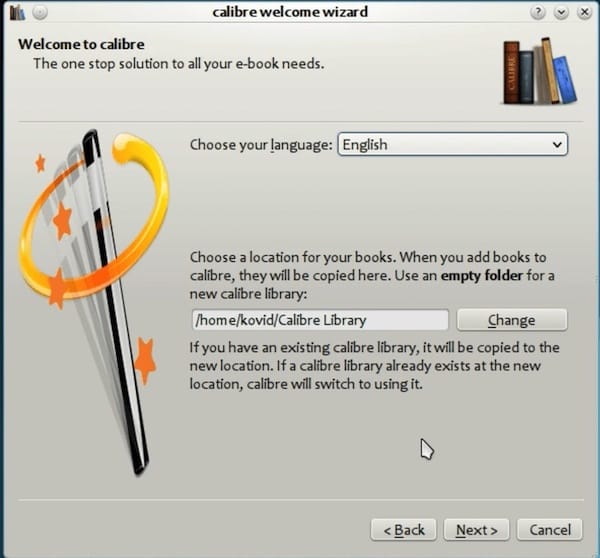How To Install Calibre on Fedora 40

In this tutorial, we will show you how to install Calibre on Fedora 40. Calibre is a powerful and versatile e-book management tool that allows users to organize, convert, and transfer e-books across various devices and formats. As a Fedora 40 user, you can easily install Calibre on your system and take advantage of its robust features.
This article assumes you have at least basic knowledge of Linux, know how to use the shell, and most importantly, you host your site on your own VPS. The installation is quite simple and assumes you are running in the root account, if not you may need to add ‘sudo‘ to the commands to get root privileges. I will show you the step-by-step installation of the Calibre e-book management on Fedora 40.
Prerequisites
Before we dive into the installation process, ensure that you have the following prerequisites in place:
- A server running one of the following operating systems: Fedora 40.
- It’s recommended that you use a fresh OS install to prevent any potential issues.
- You will need access to the terminal to execute commands. Fedora provides the Terminal application for this purpose. It can be found in your Applications menu.
- A stable internet connection to download the necessary packages.
- A non-root sudo user or access to the root user. We recommend acting as a non-root sudo user, however, as you can harm your system if you’re not careful when acting as the root.
Install Calibre on Fedora 40
Step 1. Update the System.
Before installing Calibre, it’s crucial to update your Fedora 40 system packages to ensure that you have the latest versions available. Updating the system packages helps to address any security vulnerabilities and compatibility issues that may exist in older versions.
To update your system packages, open a terminal and run the following command:
sudo dnf clean all sudo dnf update
The package manager will retrieve the latest package information and prompt you to confirm the update. Press “y” and hit Enter to proceed with the update process. Depending on the number of updates available, this step may take a few minutes to complete.
Step 2. Installing Dependencies.
Install the necessary dependencies, open a terminal, and run the following commands:
sudo dnf install xdg-utils wget xz-utils python3
Step 3. Installing Calibre on Fedora 40.
- Method 1: Installing Calibre from Fedora Repositories
The easiest way to install Calibre on Fedora 40 is by using the official Fedora repositories. This method ensures that Calibre is compatible with your system and automatically handles any necessary dependencies.
To install Calibre from the Fedora repositories, open a terminal and run the following command:
sudo dnf install calibre
After the installation is complete, you can verify the installation by running the following command:
calibre --version
One of the main advantages of using the Fedora repositories is the ease of installation and automatic dependency management. However, the downside is that the version available in the repositories may not always be the latest, and you may need to wait for Fedora to update the package.
- Method 2: Installing Calibre Using the Official Binary Installer
If you prefer to have the latest version of Calibre or if the version in the Fedora repositories is not suitable for your needs, you can use the official binary installer provided by the Calibre team.
To install Calibre using the official binary installer, follow these steps:
wget -nv -O- https://download.calibre-ebook.com/linux-installer.sh | sudo sh /dev/stdin
Follow the on-screen instructions to complete the installation process. After the installation is complete, you can verify the installation by running the following command:
calibre --version
- Method 3: Installing Calibre Using Flatpak
Flatpak is a modern package management system that allows you to install applications in a sandboxed environment, ensuring compatibility and isolation from the host system. If you prefer to use Flatpak, you can install Calibre using the following steps:
sudo dnf install flatpak
Add the Flathub repository, which is the main repository for Flatpak applications, by running the following command:
sudo flatpak remote-add --if-not-exists flathub https://flathub.org/repo/flathub.flatpakrepo
Install Calibre via Flatpak by running the following command:
sudo flatpak install flathub com.calibre_ebook.calibre
To run Calibre, use the following command:
flatpak run com.calibre_ebook.calibre

Using Flatpak to install Calibre has several advantages, such as isolation from the host system, easy updates, and the ability to run multiple versions of Calibre simultaneously. However, the downside is that Flatpak packages may not always be available for all applications, and the installation process can be more complex compared to using the Fedora repositories or the official binary installer.
Congratulations! You have successfully installed Calibre. Thanks for using this tutorial for installing the Calibre e-book management on Fedora 40 system. For additional help or useful information, we recommend you check the Calibre website.